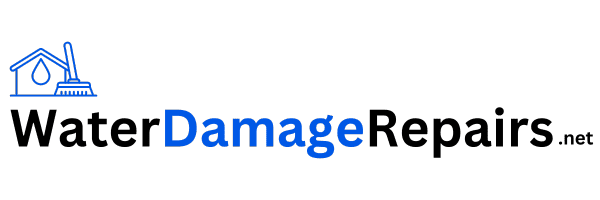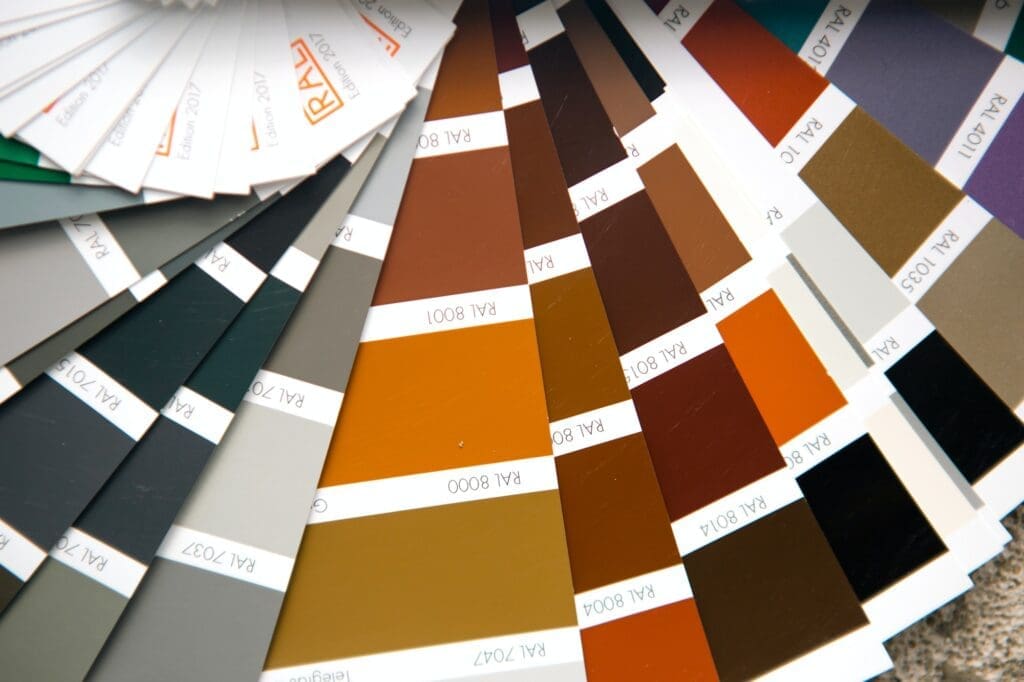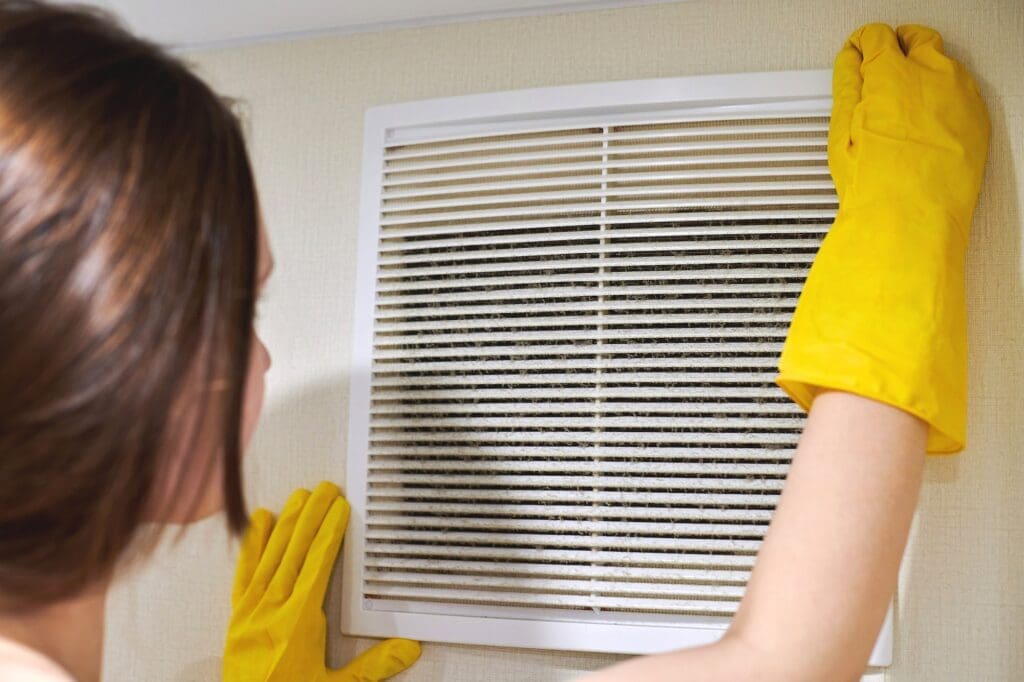The Dangers Of Mould After Water Damage And How To Remediate It
As a certified water damage restoration technician, I’ve seen firsthand the devastating effects of untreated mould after water damage. It’s easy for well-meaning individuals like you to overlook this silent danger while focusing on helping others recover from floods and leaks. But trust me when I say that addressing mould issues is just as important as any other aspect of the recovery process.
In this article, we’ll dive into why mould can be so hazardous to our health and how it often goes unnoticed in the aftermath of water damage events.
We’ll also discuss some practical steps you can take to remediate mould growth effectively, ensuring that your selfless efforts in assisting others don’t inadvertently lead to further harm down the line.
Let’s work together to create safer spaces for those who need our help!
How Water Damage Can Lead To Mould
Picture this: your home is like a fortress, protecting you and your loved ones from the elements outside. However, when water damage occurs, it’s as if a tiny crack has appeared in that fortress, providing an opportunity for an unwelcome guest to enter – mould.
That’s why waterproofing and humidity control are so essential; they act as guards against potential invaders.
As a certified water damage restoration technician, I’ve seen firsthand how quickly mould can take hold once moisture infiltrates a space. It’s sneaky and opportunistic, thriving in damp environments often hidden behind walls or under floors.
But here’s the thing – we have the power to fight back! By addressing water damage promptly and effectively through proper remediation techniques, we’re not only restoring our homes but also serving others by maintaining healthy living spaces for everyone around us.
With that said, let’s delve into understanding the different types of mould that might be lurking in those unseen corners waiting for their chance to spread.
The Different Types Of Mould
Now that we’ve covered the dangers of mould after water damage and how to remediate it, let’s dive deeper into understanding the different types of mould. You see, not all mould is created equal. In fact, there are three main categories of mould that you should be aware of: allergenic, pathogenic, and toxic.
- Allergenic Mould: This type of mould typically doesn’t pose a severe threat but can cause allergy symptoms in sensitive individuals. Common allergenic moulds include Aspergillus and Penicillium.
- Pathogenic Mould: These moulds are more concerning as they can lead to infections in those with weakened immune systems or pre-existing health conditions.
- Toxic Mould: The most dangerous category includes Stachybotrys (also known as ‘black mould’) which produces mycotoxins that can have serious health effects on anyone exposed.
It’s essential for us, as certified water damage restoration technicians, to understand these differences so we can better serve our clients affected by water damage – because their well-being is at stake here! By being knowledgeable about the various types of mould and their respective risks, we’ll be able to properly assess each situation and implement effective solutions tailored to our client’s needs.
As we continue exploring this topic further, let’s now turn our attention toward an equally important aspect: the health risks associated with exposure to these different types of mould.
Health Risks Of Mould Exposure
You may have heard that mould exposure can lead to a variety of health problems, but is this really true? As a certified water damage restoration technician, I’ve seen firsthand how dangerous mould can be, and I want you to know just how important it is to address the issue as soon as possible.
Mould thrives in damp environments and produces allergens, irritants, and even toxic substances that can adversely affect your health. Continuous exposure to these harmful particles can cause symptoms such as nasal stuffiness, throat irritation, coughing or wheezing, eye irritation, or skin rashes. For those with compromised immune systems or pre-existing respiratory conditions like asthma, the effects of mould exposure can be severe.
Now that we understand the risks associated with mould exposure let’s explore some ways we can prevent its growth after water damage occurs. Dampness prevention should always be our top priority – by controlling humidity levels and ensuring proper ventilation in our homes; we create an environment where mould struggles to grow.
Air purification systems are also valuable tools for removing airborne pollutants like mould spores from the air we breathe. Using dehumidifiers and air purifiers in combination with regular inspection and maintenance of our living spaces allows us not only to keep ourselves healthy but also fulfill our desire to serve others by providing them with a safe environment free of potential hazards.
So now that we recognize the importance of addressing mould issues promptly and effectively let’s move on to discussing practical methods for detecting signs of mould growth before delving into prevention strategies tailored specifically for your home situation.
Mould Detection And Prevention
Now that we’ve looked at the health risks associated with mould exposure, it’s crucial to understand how to detect and prevent this hazardous intruder in our homes. As a certified water damage restoration technician, I cannot emphasize enough the importance of being proactive when it comes to identifying humidity problems and potential sources of moisture that can lead to mould growth.
One effective way of preventing mould is by constantly monitoring your home for signs of excess moisture or humidity. This includes checking for condensation on windows and walls, inspecting plumbing fixtures for leaks, and looking out for musty odours – all clear indicators of an underlying issue.
Additionally, investing in efficient ventilation systems like exhaust fans (especially in bathrooms) will help maintain a balanced indoor environment. Identifying sources such as roof leaks, faulty gutters or improperly sealed windows early on allows us to address them before they escalate into full-blown mould infestations.
With proper prevention measures in place, you’re not only safeguarding your own health but also contributing positively towards creating healthier living spaces for those around you. As we move forward in our discussion about mould after water damage, let’s delve deeper into understanding the effects of moisture on mould growth so you are better equipped to tackle any situation that arises.
The Effects Of Moisture On Mould Growth
As a certified water damage restoration technician, I can’t stress enough the importance of understanding how moisture affects mould growth. You see, when humidity levels are high or there’s condensation buildup in your home, it creates an ideal environment for mould to thrive. This is why it’s crucial to address any water damage as soon as possible and take steps to control moisture levels in your living space.
Now let me share with you four key factors that contribute to mould growth:
- Temperature: Moulds prefer warmer temperatures, typically between 60-80°F (15-26°C). As the temperature rises, so does their potential to grow.
- Nutrient source: Organic materials like wood, drywall, carpeting, and fabrics serve as food sources for moulds. The more organic material present in your home after water damage, the higher the risk of mould development.
- Moisture: As we mentioned earlier, high humidity levels or persistent dampness create optimal conditions for mould growth. It’s essential to maintain proper ventilation and use dehumidifiers if needed to keep relative humidity below 60%.
- Time: Mould can begin growing within just 24 hours following exposure to moisture. That’s why quick action is critical when dealing with water-damaged property.
Remember – addressing these factors will not only help prevent future mould problems but also support you in serving others by maintaining a safe and healthy living environment. So next up: cleaning and disinfecting after water damage!
Cleaning And Disinfecting After Water Damage
Now that we’ve discussed the effects of moisture on mould growth, it’s time to dive into the next crucial step – cleaning and disinfecting after water damage. As a certified water damage restoration technician, I can assure you that proper drying techniques and ventilation solutions are key factors in preventing mould growth and ensuring a safe environment for everyone involved. But first, let’s explore some essential products and equipment needed during this process.
| Product/Equipment | Purpose | Details |
|---|---|---|
| Air Movers | Speed up the evaporation process by blowing air across wet surfaces | Choose high-velocity types |
| Dehumidifiers | Remove excess moisture from the air to prevent secondary damage | Use low-grain refrigerant or desiccant models |
| Disinfectants | Kill germs and bacteria on affected surfaces | Choose EPA-registered options |
| HEPA Vacuums | Remove dust, debris, and mold spores without releasing them back into the environment | Make sure to use HEPA filters |
| Personal Protective Equipment (PPE) | Protect yourself while working with contaminated materials | Include gloves, goggles, masks & coveralls |
Armed with these tools at your disposal, you’ll have a solid foundation for effectively tackling any water-damaged spaces. Keep in mind that each situation is unique; therefore, tailor your approach based on the severity of the damage and specific needs of those affected. Remember that our ultimate goal here is not only to restore material possessions but also to serve others by providing a healthy space where they can thrive once again. With that said, let’s move forward and discuss how to remove mould from various surfaces effectively.
Removing Mould From Surfaces
Ah, mould—the beautiful, furry artwork that nature gifts us after water damage. Who wouldn’t want to keep these colourful little spores as a reminder of that fateful day when your basement decided to become an indoor swimming pool?
Well, I hate to be the bearer of bad news, but it’s time we evict our fuzzy friends and restore some order around here.
As a certified water damage restoration technician, let me share with you the best way to remove this unwelcome houseguest from your surfaces. First things first: drying surfaces is crucial in winning the battle against mould growth. A wet environment is like a luxury resort for mould colonies—let’s not roll out the red carpet any longer!
Speed up the drying process by using dehumidifiers or fans; once everything is dry, wipe down affected areas with a mixture of soap and water (or go heavy-duty with bleach if necessary). Now, preventative measures are essential in keeping future outbreaks at bay. Make sure there’s proper ventilation throughout your home and fix any leaky pipes or roofs immediately.
You see, removing mould from surfaces doesn’t have to be an uphill battle—armed with knowledge and perseverance (and maybe rubber gloves), you can reclaim your space while serving others by ensuring their safety too. The satisfaction gained from restoring cleanliness and health will make every scrubbing stroke worth it.
But what about those sneaky airborne spores lurking behind every corner? Let’s take control back from them as well by moving on to dealing with mould in the air next.
Dealing With Mould In The Air
Let’s talk about how to identify and remove mould spores in the air. Identifying mould spores can be tricky, but with the right know-how you can get it done quickly. Removing mould spores is even more important, and it can be done with the right products and techniques.
Identifying Mould Spores
Imagine you’re in a room, and there’s an invisible enemy lurking around, something that can cause serious harm to your family or clients – toxic molds.
As a certified water damage restoration technician, I know firsthand the importance of identifying mold spores in the air and addressing them swiftly.
Molds thrive on moisture, so it’s crucial to keep an eye out for suspicious growths after any water damage occurs.
One way to spot these harmful invaders is by monitoring air circulation; when the airflow isn’t sufficient, chances are high that mold has found its home and started releasing dangerous spores into your surroundings.
Together we can serve our community better by staying vigilant against this silent threat and ensuring everyone breathes easy once more.
Removing Mould Spores
As a dedicated water damage restoration technician, it’s my responsibility to not only identify mold spores in the air but also take the necessary steps to remove them and prevent future growth.
This is where dampness control and ventilation improvement come into play – two key factors in ensuring our homes and businesses remain safe from harmful molds.
By tackling moisture issues head-on, like fixing leaks or using dehumidifiers, we can minimize the conditions that allow mold to thrive.
Properly ventilating spaces by opening windows, installing exhaust fans or utilizing air purifiers helps us maintain healthy indoor air quality for everyone around us.
Remember, every step we take together in combating mold contributes towards creating safer environments for our families, clients, and communities as a whole.
Choosing The Right Mould Remediation Product
Now that we’ve covered the importance of dealing with mould in the air, it’s time to focus on finding the right solution for your specific situation. Choosing a suitable mould remediation product is essential in ensuring both the health and safety of those around you as well as effectively addressing the underlying problem. Let me guide you through this process, keeping in mind our shared goal of serving others by creating a safe and healthy environment.
When selecting a mould remediation product, there are several factors to consider. First and foremost, analyze the extent of damage and identify which materials have been affected – this will help determine which techniques would be most effective at removing or controlling growth.
Another crucial aspect to take into account is environmental factors such as humidity levels, temperature, moisture sources, and ventilation systems within your space; these can all contribute to promoting or inhibiting future growths. By carefully considering these variables and weighing their significance against available options on the market today (such as biocides, encapsulants, etc.), we’ll ensure that we’re not only treating existing issues but also preventing any future occurrences from arising.
Armed with knowledge about various products’ strengths and weaknesses based on our unique circumstances, we’ll now proceed towards discussing professional mould remedation services tailored specifically for your needs.
Professional Mould Remediation Services
‘A stitch in time saves nine,’ as the old adage goes. When it comes to addressing mould after water damage, taking swift action is crucial not only for your well-being but also for cost effectiveness and minimizing environmental impact.
As a certified water damage restoration technician, I can’t stress enough how important it is to tackle mould problems head-on by seeking professional remediation services. By doing so, you’re helping preserve the health of both people and our precious environment.
The process of hiring an expert in mould remediation may seem daunting at first but trust me when I say that it’s worth every penny. Professional service providers are equipped with state-of-the-art tools and knowledge to effectively eliminate existing mould while preventing future growth.
Additionally, these experts implement eco-friendly practices during cleanups, ensuring minimal harm to the surroundings. Remember that serving others extends beyond personal interactions – we must care about their living spaces too!
So take that step towards safeguarding everyone’s health and contribute positively to Mother Earth by investing in reliable mould remediation services today, ensuring a cleaner, safer, and healthier environment for all.
Frequently Asked Questions
Can Mould Develop In Hidden Areas, Such As Behind Walls Or Under Floorboards, After Water Damage?
Absolutely, mould can develop in hidden areas like behind walls or under floorboards after water damage.
As a certified water damage restoration technician, I’ve seen it happen many times.
You see, when moisture gets trapped in these enclosed spaces with limited airflow dynamics, it creates the perfect environment for mould to thrive.
This can lead to poor air quality and pose serious health risks to you and your loved ones down the road.
It’s essential that we take care of our homes – not just for ourselves but also for those who visit us and share our living spaces.
So if you suspect any hidden mould growth following water damage, don’t hesitate to reach out for professional help because serving others starts with taking care of our own surroundings first!
How Long Does It Typically Take For Mould To Start Growing After An Instance Of Water Damage?
It’s a bit of an unpleasant surprise when mould starts to make itself at home after water damage, isn’t it?
As a certified water damage restoration technician, I’d like you to know that mould can start growing as quickly as 24-48 hours after the initial water intrusion.
Factors such as air flow and humidity levels play a significant role in how fast those pesky spores multiply.
In spaces with poor ventilation and high moisture content, you’ll find that mould growth accelerates much more rapidly than in areas with good air circulation and lower humidity.
So, for folks like us who have an innate desire to help others thrive in healthy environments, it’s crucial to address any issues related to water damage promptly and effectively!
Are There Any Specific Materials Or Surfaces That Are More Prone To Mould Growth After Water Damage?
As a certified water damage restoration technician, I can tell you that some materials and surfaces are definitely more prone to mould growth after water damage.
Porous materials like wood, drywall, carpeting, and fabrics are particularly susceptible because they absorb moisture easily, creating ideal conditions for mould to thrive.
High humidity levels also contribute significantly to the problem – if the indoor air is persistently damp, even non-porous surfaces can support mould growth.
The key prevention methods include drying out wet areas as quickly as possible (ideally within 24-48 hours), maintaining good ventilation throughout your property, using dehumidifiers in high-humidity spaces, and applying anti-mould treatments to vulnerable surfaces.
By being proactive with these measures, we can help protect our clients’ homes from the harmful effects of mould while serving their best interests!
Can Mould Be Completely Eradicated After Water Damage, Or Will It Always Leave Some Trace Behind?
Did you know that over 50% of homes in the United States have some form of mould contamination?
As a certified water damage restoration technician, I can assure you that while it’s difficult to completely eradicate all traces of mould after water damage, with proper remediation and preventative measures, we can significantly minimize its long-term effects.
It’s crucial for us to be thorough in our work and diligent in addressing potential problem areas since even the tiniest amount of lingering moisture can cause mould growth.
By working hand-in-hand and taking care of each other’s properties, we’ll not only create healthier living environments but also strengthen our collective commitment to serving others within our communities.
How Can Homeowners Determine If Their Home Is Structurally Sound After Water Damage And Mould Remediation?
As a certified water damage restoration technician, I know how crucial it is to assess the structural soundness of your home after water damage and mould remediation.
To determine if your home is safe, you’ll need to consider assessing risk factors such as remaining moisture levels, wood rot or compromised building materials, while also implementing prevention methods like proper ventilation and moisture control.
It’s always best to consult with a professional who can thoroughly inspect your property and provide tailored recommendations for ensuring its safety.
Remember, we’re here not only to help restore homes but also to empower homeowners in creating healthier living environments – because serving others starts with making sure our own spaces are secure and protected.
Conclusion
In conclusion, dealing with the aftermath of water damage can be quite a daunting task, especially when it comes to tackling hidden mould growth. As we’ve seen, these pesky fungi can develop in concealed areas such as behind walls or under floorboards, and may begin their invasion within just 48 hours after an unfortunate event.
While some materials and surfaces might provide more hospitable environments for mould to thrive, it’s important not to lose hope. With the right approach and professional assistance, you’ll find that there is light at the end of the tunnel—or should I say, clear air beyond the mustiness?
Mould remediation is possible and complete eradication of visible traces can indeed be achieved through thorough cleaning and treatment.
Lastly, ensuring your home’s structural integrity post-water damage and mould remediation is essential for maintaining safety and peace of mind. Trusting in certified technicians will help guarantee that your abode remains strong against future invasions by unwanted fungal intruders. Remember—you’re not alone in this journey; expert support is available to guide you every step of the way towards restoring your sanctuary to its former glory.



